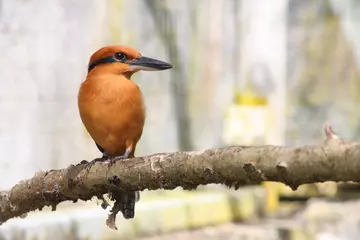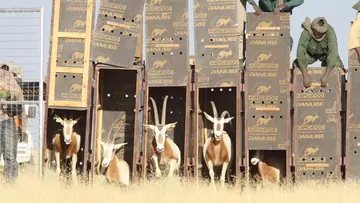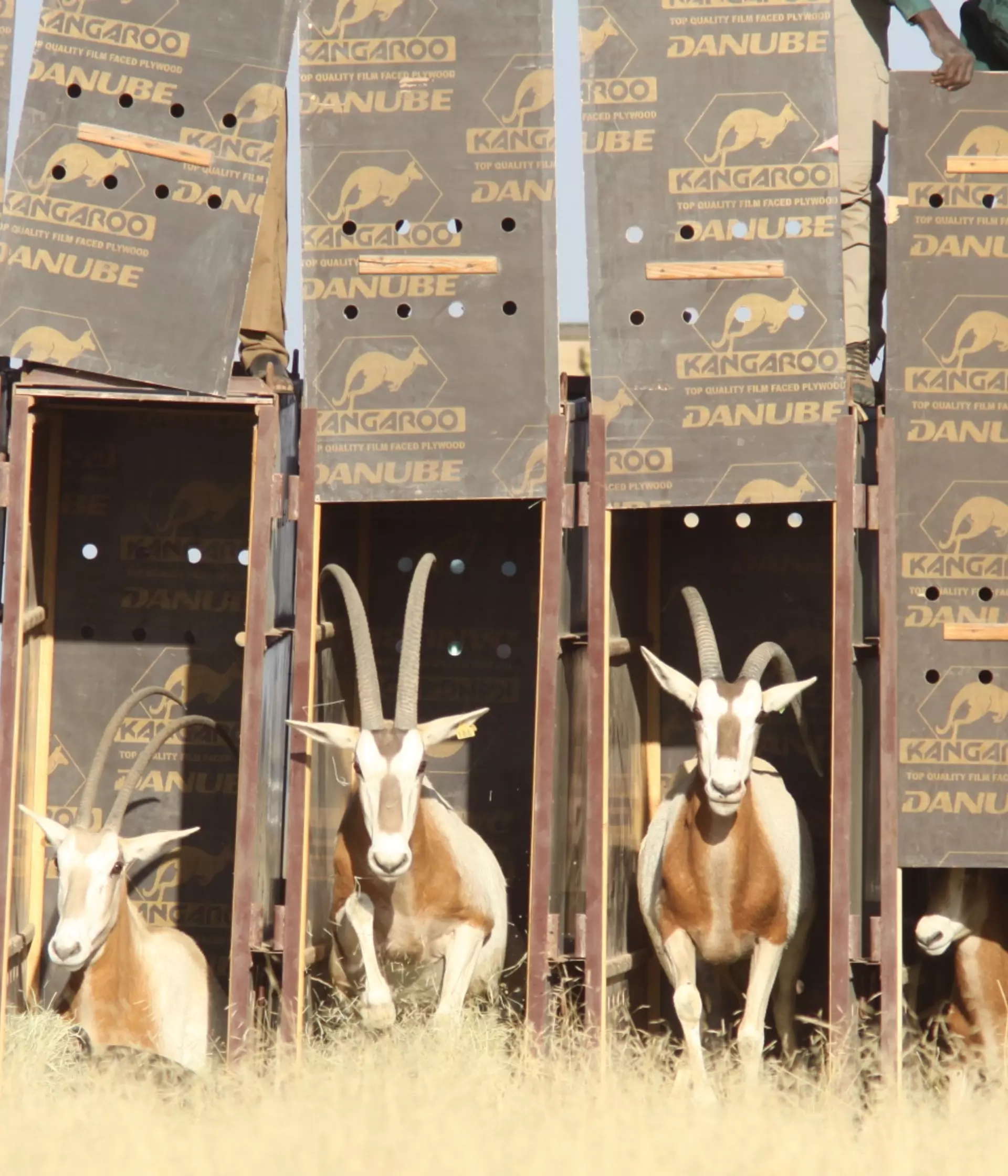
ZSL
Zoological Society of London
A new ZSL-led study spotlights vital role of conservation zoos in saving ‘extinct in the wild’ species.

A ground-breaking study led by ZSL has confirmed the astonishing potential for conservation zoos, aquariums, botanical gardens, and seedbanks across the world to bring animals and plants back from extinction.
Published today (Thursday 23 February) in the prestigious journal Science – the world’s leading outlet for cutting-edge science – the research is the first to comprehensively evaluate the 95 ‘extinct in the wild’ animals and plants that, since 1950, have survived only in the care of zoological and botanical institutions - after being driven to extinction in the wild, largely as a result of human-driven activities such as habitat destruction.
The paper outlines how immense collaborative efforts by these conservation organisations - working alongside governments and partners responsible for wild habitats - have combined to prevent extinction and allow some species to successfully reclaim their wild status.
But, it warns, existing solely under human care is not a secure place for these species, revealing how close we are to forever losing many more.
Lead author Donal Smith at ZSL’s Institute of Zoology, said: “Without these dedicated organisations and their conservation efforts, we would have already lost species like scimitar-horned oryx, several Polynesian tree snails, and the yellow flowering toromiro. Thanks to decades of tireless work saving species, we have the opportunity to re-establish more populations in the wild; it’s imperative that conservation zoos, aquariums, botanical gardens and seedbanks are given the financial - and inter-governmental - support to do so.”

Experts at ZSL’s conservation Zoos, London and Whipsnade, work with 16 of the 38 currently extinct in the wild animal species - more than any other zoo in the UK - and have a long history of working with others. Through collaborative breeding programmes, fieldwork and research, ZSL has already worked alongside many partners to return a number of extinct species to their wild habitats, such as Partula tree snails to the islands of French Polynesia and the scimitar-horned oryx to Chad – and has plans to return the colourful sihek (Guam kingfisher) to the wild later this year.
“But despite heroic efforts, failures are about as common as successes,” added Donal. “Cases like the Catarina pupfish, sadly lost forever in 2012, remind us how fragile this space can be - whereas the European bison, once restricted to a small population under human care, is now thriving in the wild, offering an inspirational example of what pioneering conservation work can achieve."
One area that must be recognised for all extinct in the wild species is how variable their extinction risks are; despite all being found only under human care, some species have only a handful of individuals left, while others have several thousand.
Protecting species is central to ZSL’s mission and purpose, and this crucial new scientific research will contribute to the long-term protection of important extinct in the wild species. John Ewen, researcher at ZSL’s Institute of Zoology and senior author of the study, explains: “Each extinct in the wild species is unique in how secure it is from extinction, so saving them requires specific actions tailored to each species.
“Contrast for example the high risk of extinction for the Socorro dove, in zoos for nearly 100 years with a current population of just 162 birds, to the more secure situation for species like the scimitar-horned oryx where the zoo population size is in the thousands and successful reintroductions are progressing well only 16 years after extinction in the wild.”

John explains: “We have the ability to protect and save all of these species, but successful recoveries are made easier when we have more individuals in breeding programmes and a faster turnaround between loss from the wild and their return to it.”
ZSL’s Director of Conservation and Policy Andrew Terry and study co-author said: “This study demonstrates how powerful conservation work can be in protecting species and tackling the biodiversity crisis, even in the most extreme cases. Alongside being led by science and managed by experts, its vital that these conservation breeding and release programmes are supported by funders and policy makers. We’ve proven how positive the outcomes can be for extinct in the wild species - we now need to see more investment in them.”
The paper also highlights the divide between animal and plant species, with more attention to translocating animals over plants, despite both being equally represented as extinct in the wild; of the 12 species for which wild populations have already been re-established, only two are plants, reflecting the fact that currently only 23% of extinct in the wild plant species have undergone translocation attempts, compared to 67% of animal species.
Sarah Dalrymple, at Liverpool John Moores University and study co-author explained: “There are several reasons why extinct in the wild plant species might be less frequently the focus of translocations, including a lack of suitable individuals for planting and changes to their original habitat. However, attitudes are shifting, with more emphasis on botanic gardens working together and finding suitable wild homes away from the site of origin, offering great hope for future plant recovery.”
Axel Moehrenschlager, Chair of the IUCN SSC Translocation Specialist Group and study co-author said: “It will take Herculean collaborative action to return all extinct in the wild species to the wild, which is what all zoos, aquariums, botanical gardens, and seedbanks globally would ultimately like to see. As the world addresses the threats of climate change and habitat loss, these organisations will continue to play vital roles in preventing further biodiversity loss and ultimately driving species recovery.”
ZSL believes nature can recover, and that conservation is most effective when driven by science. We call for science to guide all global decisions on environment and biodiversity and build a healthier future for wildlife, people and the planet.
Support ZSL’s world leading, collaborative science and conservation work
Climate change and human activity have pushed our precious planet to its limit, causing the devastating loss of so many habitats and species. From lab to field, hands on and behind the scenes, we’re leading the future of conservation, shaping agendas and influencing change to support better life, health and living for people and wildlife.
